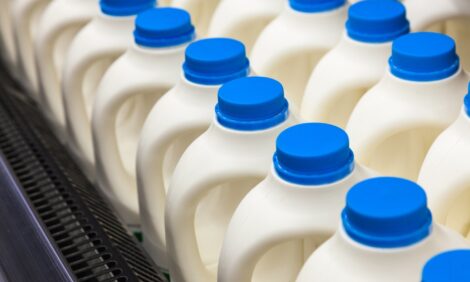



Financial Crisis Reaches Out to Cattle
US - U.S. agriculture is caught in the web of uncertainty being created by the financial crisis of 2008. The cattle industry is no exception, as both domestic and foreign demand for beef is related to consumer incomes.Where the U.S. and world economies go is expected to plot the direction for cattle prices. As a consequence, beef supply fundamentals seem less important to prices, at least for now, says Chris Hurt, Extension Economist, Purdue University.
It is no mystery that concerns over a downturn in the U.S. and world economies has been the headline news from Wall Street to Main Street to RFD America in the past three weeks. The stock market, as measured by the S&P 500 index, was down 23 percent from September 26 to October 17. The impact on the cattle market was robust as well, with December live cattle futures falling 10 percent and the price of finished cattle falling $8.50 per live hundredweight.
The recent financial losses for the cattle industry were particularly large for feedlots that did not have finished cattle forward sold, especially those who had purchased high priced calves and high priced feed this past summer. The most likely group in this category is small farmer feedlots as many large commercial feedlots have a greater tendency to have cattle forward sold. The negative financial impacts on cow-calf producers has been somewhat less in recent weeks as November feeder cattle futures fell only 7 percent.
Looking forward, the current decline in feed prices has been a huge advantage in reducing costs of finishing cattle and helped to keep the declines in calf prices more moderate. Feed prices have fallen by a much larger percentage than have cattle futures. During the last three weeks, December corn futures fell by 25 percent, with December soybean meal futures down 20 percent.
Beef demand and cattle prices are directly impact by consumer incomes. The current financial crisis may reduce those incomes and therefore cattle prices. The magnitude of the decline in incomes will influence the magnitude of decline in cattle prices. The last two recessions in the U.S. were very mild. This recession may be more severe, more like the recessions of 1974 and 1975 and again in 1981 and 1982, when real Gross Domestic Product (GDP) dropped near 3 percent. A drop of that magnitude this time could have a $4.50 to $5.00 per hundredweight negative impact on live cattle prices, not as much as prices have already dropped.
This would suggest that the live cattle futures decline of $10.25 per hundredweight over the past three weeks is too much. That probably is true if real GDP drops only 3 percent or less in a coming downturn. However, as many supposed experts have stated to the media, "this is the worst financial crisis since the great depression." These statements suggest the possibility that the downturn will be much greater.
The leading indicator for the cattle sector right now is probably the stock indexes. If there is a general improvement in global financial concerns, those will be quickly reflected in stock prices. Indicators today say that the credit crisis is easing somewhat and money flow between banks is beginning to improve somewhat. The odds of a financial collapse are now somewhat lower as the governments of the world's major economies have pledged to make sure the collapse will not occur.
What should people in the cattle industry do now? The first message always is not to panic. Odds favor a recession and not a depression. Understanding of the magnitude of the recession is unfolding now as the impacts of the past few weeks affect consumer spending, business investment decisions, and trade. Markets often anticipate the worst, and if the worst does not occur, there is some recovery. That may well be the direction for the cattle markets as well. If so, this would enable cattle prices to recover several dollars per hundred, but feed prices would be expected to rise as well.
Buying feed at this time is a consideration with both harvest and a financial crisis weighing on grain prices. But that has to be done with a view to the risk bearing ability of the individual firm. In these uncertain times, locking in feed costs without pricing output leaves one in a vulnerable position if the recession is worse than anticipated. Taking positive margins by establishing both input and output prices is always the more comfortable strategy in uncertain times.
For cow-calf operations, a similar no-panic attitude is probably the best path. The feed price highs are probably behind the industry, at least for now, and the world economic crisis may not come to fruition. The world's governments have administered a huge amount of stimulation to economic activity both by infusions of capital and in monetary policy. That large stimulation will probably have the result of moderating recessionary pressure now, but also in stimulating more inflation in commodity prices over coming years.
Recovery in finished cattle prices to the low-to-mid $90s would seem to be the most likely possibility in coming months. A recovery of $5 to $7 per hundredweight might be appropriate to expect for feeder cattle and calf prices as well.
TheCattleSite News Desk


